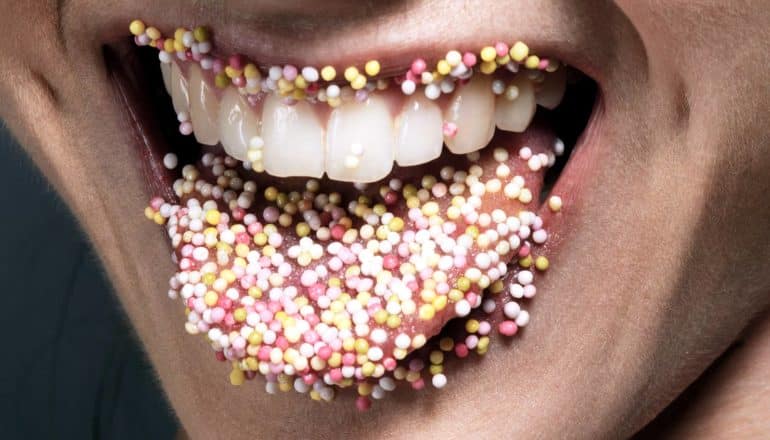
A new study breaks down, in detail, where the many proteins in saliva originate.
The paper in Cell Reports traces these vital proteins back to their source, showing which proteins are produced by each of the three major types of human salivary glands, and showing how individual cells within a single gland can secrete different proteins.
The project also identifies proteins in the mouth that seem to be coming from outside of salivary glands, from places such as epithelial tissues or blood plasma.
“Saliva is important for tasting, for digesting, for swallowing, for defending us from the pathogens that we are constantly inhaling and consuming. The proteins in our mouth form an army, if you will, that’s working constantly to protect us,” says Omer Gokcumen, associate professor of biological sciences at the University at Buffalo.
“Before this, scientists had an idea of the proteins that are found in the mouth, but we didn’t have a complete picture of where they were coming from. We’re addressing this gap.”
“Salivary proteins are a gateway to our body.”
“From a biomedical perspective, our research opens the door for further studies into the functions of saliva and salivary glands, and the use of saliva as a diagnostic fluid. Our study takes a snapshot of how healthy salivary glands should function. Deviations from this healthy expectation can indicate disease,” says Stefan Ruhl, professor of oral biology in the University at Buffalo School of Dental Medicine.
To explain how our bodies make saliva, the scientists first sought to understand which proteins are produced by each major type of salivary gland—the parotid, submandibular, and sublingual glands (humans have a pair of each).
To do this, the team used a method called transcriptomics to measure gene activity in each kind of gland. Gene activity provides insight into protein production, because each gene provides instructions for making a specific protein.
This endeavor enabled the scientists to understand the proteins that each gland generates, and how the glands differ from one another in terms of what they produce.
For instance, the study finds that the parotid and submandibular glands create a lot of salivary amylase, an enzyme that helps to digest starch, while the sublingual gland makes almost none. Meanwhile, the sublingual gland produces relatively large quantities of certain GalNAc transferases, a family of enzymes that’s important in initiating a process called O-glycosylation that attaches a sugar to certain salivary mucin proteins. These are just a couple of examples.
“We show how the actions of different glands collectively help to produce a complex bodily fluid—our saliva,” says first author Marie Saitou, a tenure-track researcher in biosciences at the Norwegian University of Life Sciences.
“Our work reveals that even a gland type itself is not homogenous: the saliva-producing acinar cells, which were once thought to produce the same proteins, and thus be the same cells, actually synthesize distinct saliva proteins, thus indicating a new level of cellular diversity,” says study co-leader Sarah Knox, associate professor of cell and tissue biology in the University of California, San Francisco School of Dentistry.
Gokcumen says the research is one step toward understanding the immense complexity of saliva. Beyond parsing out the origins of proteins made by salivary glands, the team also concluded that some proteins drifting in saliva likely don’t originate from salivary glands, and that some important proteins that help to regulate gene expression are predominantly active in salivary glands, but not in a litany of other tissues.
“Salivary proteins are a gateway to our body,” Gokcumen says. “When they do not function properly, we suffer. Our work brings us one step closer to understanding their complex origins and the intricate interplay between them.”
“Long wished-for diagnostic applications of saliva for monitoring systemic well-being and disease will need to measure quantitative differences of biomarkers in saliva,” Ruhl says. “One obstacle always hampering progress in this arena was that we did not know exactly which proteins were intrinsically produced by the salivary glands, and which proteins diffused into saliva from surrounding tissue leakage.
“Also, we were lacking a reliable baseline, a standard, if you will, that tells us what are normal and healthy values for the protein components in saliva. Our paper helps resolve these conflicts, providing information that I expect will propel salivary diagnostic applications forward.”
Source: University at Buffalo
The post How spit gets its ‘army’ of proteins appeared first on Futurity.
from Futurity https://ift.tt/38Z9vKS
No comments:
Post a Comment